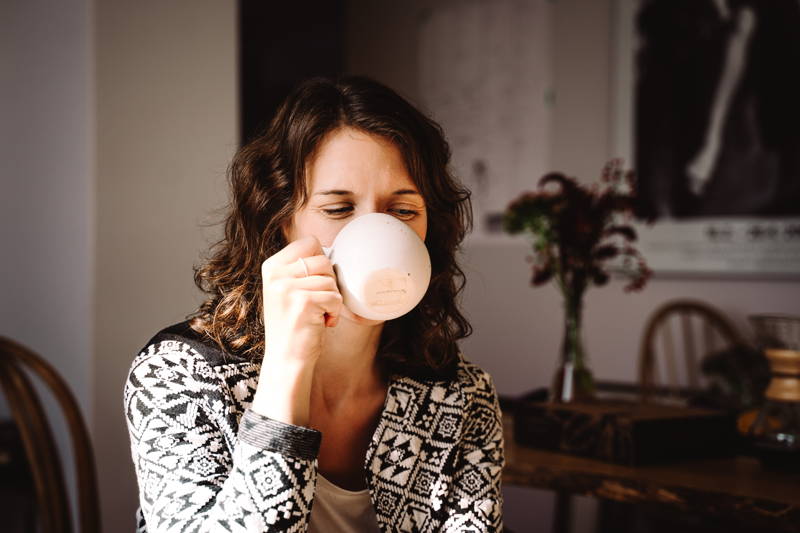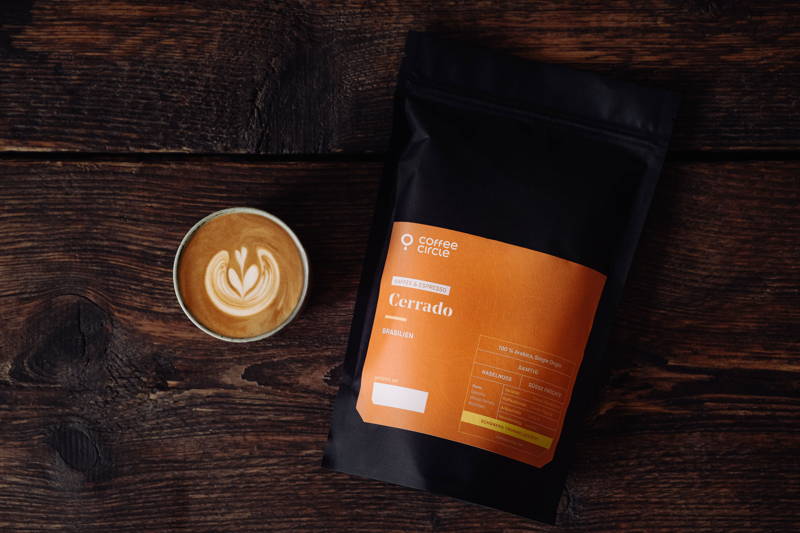
A contribution from Julia Hermle in the category #Coffee Knowledge from 8 January 2021
The advantage of a fully automatic machine is obvious: it’s fast and you always have consistent quality once the right settings have been found. We will help you with this article.
But you have to get to that point first, because every fully automatic machine works differently. Here we share 7 tips with you that will help you set your fully automatic machine so that you get the best out of your machine. We have tested our coffee beans intensively with different settings in the fully automatic machine, here are the results.
Overview of all tips:
All tips in the video
1. The right bean for your fully automatic machine
Therefore, we recommend strongly roasted and low-acid coffees for use in fully automatic machines
In addition, many fully automatic machines only allow you to use one type of bean, as the machine only has one bean container. The challenge here is to prepare an espresso and a café crème from the same coffee bean.
The right choice of coffee beans is crucial for the quality and taste of your coffee drink. In order to choose the right beans, you should consider the following: When brewing with a fully automatic machine, coffees are brewed with a short extraction time and you cannot adjust the grind size as finely as with a coffee or espresso grinder.
Our goal is to make every drink taste really good without being bitter or sour. That’s why we developed Tiga Terra coffee! Over many months we have run tests to perfect the roast profile for the requirements in the fully automatic machine. The result is a blend of three countries and a strong roast profile for Tiga Terra that gives the coffee a strong and full body. We recommend Tiga Terra for all beverages in fully automatic coffee machines – from café crème to espresso and milk drinks.
Light roasts are rarely convincing in fully automatic machines, as the extraction time is too short to release the desired aromas from the coffee. If you use particularly light roasts, you can even damage your grinder, as the beans can be too hard or not porous enough, which can lead to clogging and damage to the grinder.
Strong roasts are particularly suitable for this. Coffees with a high-quality Robusta content are often helpful here, as they provide a full body – such as our Tiga Terra, Jhai (100% Robusta) or Yirga Santos. When selecting your coffee or espresso, however, you should make sure that the coffees are not shiny with oil, which can cause the grinder to become sticky over time.
We have tested all our coffees in different fully automatic machines. For us, the best coffees are our Tiga Terra, Espresso Grano Gayo, Yirga Santos for espresso drinks and our coffee Tiga Terra, Toleyo and Buna Dimaa for Café Crème. Fruity coffees like our Yirgacheffe have a tendency to taste slightly acidic from the fully automatic machine.

Fully automatic machines with one bean container:
If your fully automatic machine only has one bean hopper available, I recommend our Tiga Terra coffee. With its strong and chocolaty aromas, it is capable of serving the complete range of beverages from espresso to café crème from a fully automatic machine. The chocolaty flavors come out very well in milk drinks. My personal favorite!
Fully automatic machine with two bean containers:
With such a device, it makes sense to use two different beans. You use the first bean, such as Tiga Terra, to prepare espresso and espresso-based drinks such as cappuccino and latte macchiato. Fill the second bean hopper with coffee beans to make a café crème. Our recommendation for this: Toleyo.
2. Use the correct grind size
The right grind size is just as essential for fully automatic machines as for other preparation methods. Often you will find a controller on the fully automatic machine with the indication of a large and small bean to change the grinding settings.
Do not set the grinder to the finest setting! This way you run the risk of clogging the grinder.
To find the perfect grind size for your fully automatic machine, it’s best to use the throughput time of an espresso as a guide. How long does the fully automatic machine need to brew an espresso with a volume of approximately 30 – 35 ml? In our tests with various fully automatic machines, we found that the brewing time of a perfect espresso differs significantly per machine. On average, you’re doing pretty well with a brewing time of about 10 seconds. For this, we had to set the factory settings of the grind level a bit finer on all the machines we tested.
If the grind is set too coarse and the espresso runs through in only 2-3 seconds, the coffee grounds have too little surface area and the water is only in contact with the coffee grounds for a very short time. Consequently, the espresso tastes watery and acidic, i.e. under-extracted. If the coffee tastes too strong and bitter, you should set the grind a little coarser. However, your individual taste is more important than adhering to a certain time specification.

3. Choose the right dosage and intensity
When preparing coffee and espresso, there are some rules for achieving an ideal extraction. These are not very helpful when preparing coffee with a fully automatic coffee maker, since you can only rarely see the number of grams of coffee. To adjust the dosage of coffee, there is often only the selection of the flavor „strong“ or „mild“ in the settings. Since the setting options vary depending on the machine, we do not want to give you a recipe at this point, but recommend that you try different settings depending on the beverage selection. For example, for a café crème, we set the intensity to a medium setting (3 out of 5 beans). For espresso preparation, we like a strong taste and therefore set a high intensity (5 out of 5 beans).
4. Amount of water per drink
With some fully automatic machines, you have the option of specifying the exact amount of water. If this is the case, we recommend 35 ml of water for preparing an espresso or cappuccino and 110 ml for a café crème. The coffee outlet temperature is 83 °C – 86 °C. Inside the machine during the brewing process, 90 – 95 °C is reached. If your coffee machine offers the option of changing the water temperature, set it to 95 °C. At this temperature, the best possible extraction of aromas from the coffee bean takes place.
If you want a large cup of coffee, we advise against increasing only the amount of water in your drink. This will cause you to water down or over-extract your beverage and dissolve many bitter compounds. This is what we actually want to avoid! Therefore, our tip is to draw two drinks into one cup or to extend your drink afterwards with hot water (like an americano) to get a larger coffee.

Difference between café crème and americano
5. Clean your fully automatic machine properly
Cleaning your coffee maker is the least fun task, but probably the most important for taste and hygiene. Most coffee machines make it easy for you and automatically guide you through the cleaning program.
Try to avoid keeping water in the water tank for too long. Change it regularly. In most cases, a cleaning tablet and the corresponding maintenance program will automatically clean the inside of the machine. Residues such as coffee oils settle inside the machine, which become rancid in combination with oxygen and, in the worst case, lead to mold inside the machine. Lack of cleaning will transfer the taste to your coffee. It is especially important to clean the parts that have come into contact with milk. Often, your machine supplier will provide you with a cleaning solution for milk pipes.
Tip: Do not push the drip tray back in completely after manual cleaning. Instead, leave it and the tray for the cleaning tablets on top of the machine slightly open so that air can circulate through the machine.
You should clean the coffee grounds container and water reservoir daily.

6. Used milk
We recommend using homogenized milk with a high fat content. Also make sure that the milk used is cold and does not get too warm. Many machines do not heat milk to a target temperature, but heat by target time. If the milk used is too warm, it will negatively affect the foam quality and taste.
7. Filtered water
Some machines have a built-in water filter on their water tank. If your machine does not have this, we recommend that you only use filtered water. Coffee is 99 % water. So it’s obvious how much influence the water you use has on the taste of your coffee. Learn more about coffee water here ›
Tiga Terra - Our coffee recommendation for fully automatic machines
Tiga Terra is the best coffee for the fully automatic machine! Over many months, we have worked together with customers on the recipe of the coffee. The blend from Brazil, Indonesia and Laos is suitable for any beverage preparation in the fully automatic machine, from café crème, espresso to milk drinks.
You may also be interested in

Julia Hermle
Julia betreut unsere Firmen- und Gastrokunden. Vor Coffee Circle trank Julia eher selten Kaffee. Inzwischen begeistern sie fruchtige Filterkaffees aus der Chemex.








